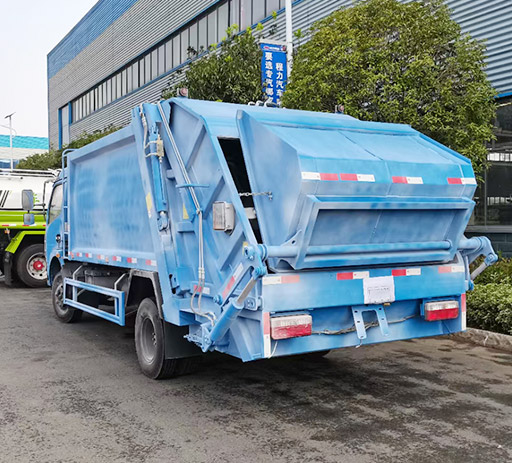Petersbuilt 548: A Comprehensive Guide to the Iconic Truck Model

Introduction
The Peterbilt 548 is a versatile truck model that has captured the hearts of truck enthusiasts and industry professionals alike. Known for its durability, innovative technology, and outstanding performance, the 548 is tailored to meet a variety of trucking needs, from construction to heavy hauling. This article will delve into the specifications, features, advantages, and maintenance of the Peterbilt 548, providing practical insights and tips for potential buyers and users. By the end of this guide, you’ll have a thorough understanding of why the Peterbilt 548 is a top choice in the trucking industry.
Understanding the Peterbilt Brand
History of Peterbilt
Founded in 1939, Peterbilt has been a leading manufacturer of heavy-duty trucks in North America. The brand is synonymous with quality and innovation, providing vehicles that excel in performance and comfort. The introduction of models like the 548 showcases Peterbilt’s commitment to engineering excellence.
Why Choose Peterbilt?
- Reliability: Peterbilt trucks are built to last, ensuring maximum uptime for operators.
- Comfort: The ergonomically designed interiors provide a comfortable driving environment.
- Technology: Cutting-edge technology features enhance safety and efficiency.
- Customization: Options for customization let owners tailor their trucks to specific needs.

Peterbilt 548 Specifications
Engine Options
| Engine Model | Horsepower | Torque (lb-ft) |
|---|---|---|
| Cummins ISL9 | 260-450 | 660-1250 |
| Paccar MX-13 | 380-565 | 1460-1850 |
Dimensions
The Peterbilt 548 comes in various configurations, allowing for different lengths and weights. Here are some standard dimensions:
- Overall Length: Up to 40 feet
- Width: 96 inches (standard)
- Height: Up to 13.5 feet
Transmission Options
Various transmission options cater to different driving styles and requirements, including:
- Automated Manual Transmission (AMT)
- Manual Transmission
- Automatic Transmission
Key Features of the Peterbilt 548
Advanced Safety Features
Modern trucks need to prioritize safety. The Peterbilt 548 includes advanced systems such as:
- Collision Mitigation Systems: To help prevent accidents.
- Lane Departure Warning: Alerts drivers if they unintentionally drift.
- Adaptive Cruise Control: Maintains distance from vehicles ahead.
Comfort and Ergonomics
Long hours on the road demand comfort. The Peterbilt 548 offers:
- Spacious Cab: Designed for ample legroom.
- Adjustable Seats: Customizable to driver preference.
- Integrated Infotainment System: For either entertainment or navigation.

Performance and Versatility
Hauling Capacity
The Peterbilt 548’s design allows it to handle various loads with ease. Typical capacities range from 28,000 lbs to over 80,000 lbs, depending on configuration. This makes it suitable for heavy hauling tasks as well as light-duty jobs.
Fuel Efficiency
| Engine Model | Miles Per Gallon (MPG) |
|---|---|
| Cummins ISL9 | 7-10 MPG |
| Paccar MX-13 | 6-8 MPG |
Maintenance Tips for the Peterbilt 548
Routine Inspections
Regular checks can prevent significant issues. Focus on:
- Fluid levels (oil, coolant, etc.)
- Tire pressure and tread depth
- Brake conditions
Engine Maintenance
Keep the engine running smoothly by:
- Changing oil every 10,000 miles
- Replacing air filters regularly
- Monitoring engine diagnostics
Training for Drivers
Proper training enhances safety and efficiency. Encourage drivers to:
- Take defensive driving courses
- Stay updated with new technology
- Understand load management techniques
Purchasing the Peterbilt 548
New vs. Used
Deciding between a new or used truck involves weighing your budget against your needs. Consider:
- New trucks come with warranties and the latest technology.
- Used trucks offer a lower entry cost but may require more maintenance.
Financing Options
There are several financing options available for purchasing a Peterbilt 548:
- Bank Loans: Traditional financing via local banks.
- Lease Agreements: More flexible terms with lower monthly payments.
- Manufacturer Financing: Peterbilt often has special financing deals.
Common Applications for the Peterbilt 548
Construction
The robust design makes the Peterbilt 548 a popular choice on construction sites due to its ability to haul heavy materials efficiently.
Heavy Hauling
Due to its strong engine options and large capacity, the 548 is frequently used for moving oversized loads across long distances.
FAQs about Peterbilt 548
1. What is the average lifespan of a Peterbilt 548?

With proper maintenance, a Peterbilt 548 can last over a million miles, providing reliable service for many years.
2. What is the towing capacity of the Peterbilt 548?
The towing capacity varies based on the configuration, but it typically ranges from 28,000 to 80,000 lbs. Always refer to specific model specifications for exact numbers.
3. Can the Peterbilt 548 be customized?
Yes, the Peterbilt 548 offers a range of customization options, including engine type, transmission, cab design, and additional features to suit operational requirements.
4. Is financing available for the Peterbilt 548?
Yes, various financing options are available, including loans, leases, and manufacturer financing packages designed specifically for Peterbilt trucks.
5. What type of fuel does the Peterbilt 548 use?
The Peterbilt 548 utilizes diesel fuel, which is well-suited for heavy-duty applications and offers better fuel efficiency compared to gasoline engines.
6. How often should I perform maintenance on my Peterbilt 548?
Routine maintenance should occur every 10,000 miles, including oil changes, inspections of fluid levels, and checks on brakes and tires. Regular checks can prevent larger issues down the road.
